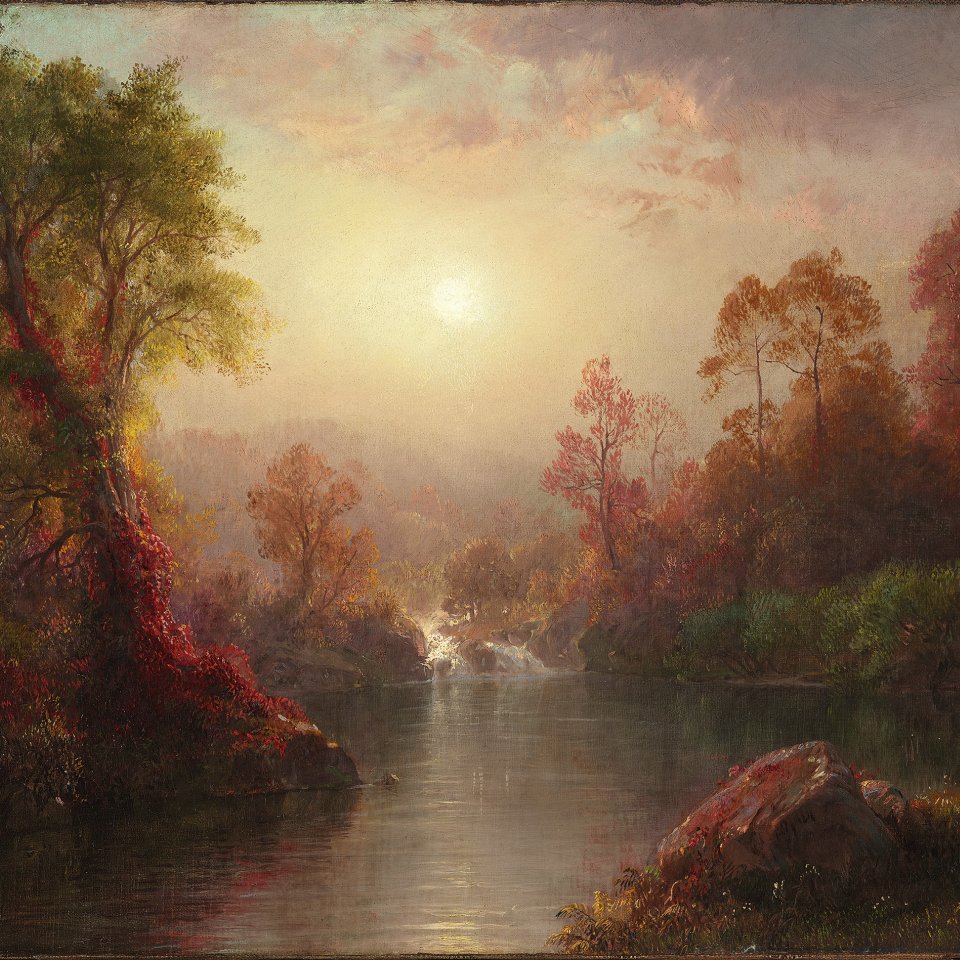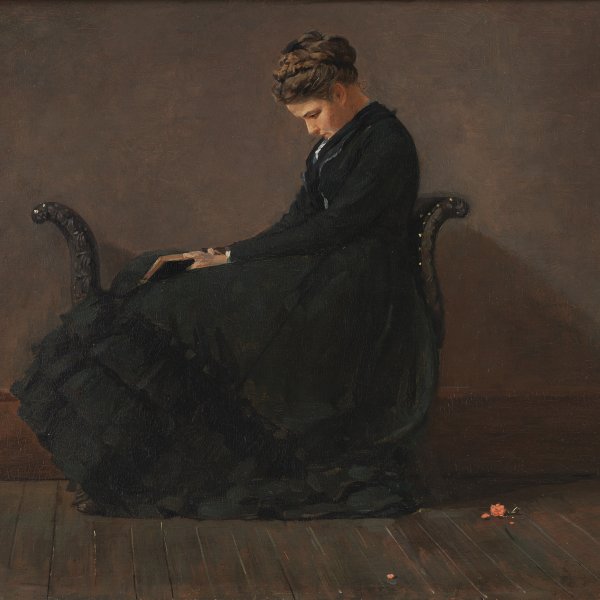Signal of Distress
Following a period spent on the English North Coast, Winslow Homer returned to the United States and settled on the equally cold and inhospitable Maine coast. The Distress Signal depicts a rescue at sea. In the foreground a group of sailors watch as fellow crew members prepare to board a lifeboat and reach safety. Their figures seem monumental as they confront a raging sea that is about to engulf a wrecked vessel.
The canvas was first exhibited in 1891 and enjoyed such success that the New York publisher Charles Klackner had photogravure reproductions made and sold. In 1892 Homer made various changes to the work in a process that continued until 1896 when he dated the canvas. These modifications, which consisted of removing the boat’s bulwark rail and turning what was previously a sailing boat in distress into a half-submerged ship, functioned to emphasise the drama of the moment and to place more emphasis on the sea.
CM
The painting belongs to a series devoted to the theme of man’s heroic struggle against the rough seas, on which Homer worked at the beginning of the last decade of the nineteenth century.When the set was shown at Reichard & Co. in New York in 1891, The Signal of Distress was described by a critic for The New York Times as follows: “An officer and five sailors on the deck of a steamer are hurrying toward and tumbling into a boat still hoisted at the davits. The ocean beyond is streaked with dark blue and turquois [sic] [...] in the distance is a ship under full sail. The figures are brisk in movement and express the determination of all hands to get to the rescue in the shortest possible time.”
It is evident that the “ship under full sail” noted by the aforementioned critic in 1891 does not feature in the painting today, as Homer repainted his picture in 1892 and 1896 to heighten the tragic aspect of the scene. A comparison of the final work with a reproduction made by his New York gallery owner following the positive response to the painting at the 1891 exhibition shows that the painter not only converted the ship with unfurled sails in the distance into a small, soon to be shipwrecked boat flying the “signal of distress” but eliminated the ship’s rail and rigging. There is a pencil drawing depicting the lowering of the lifeboat from the ship’s deck, which later became the focus of the finished painting.
What is telling is that these changes not only enhanced the dramatic force of the painting but modified the significance of the action. If, as Nicolai Cikovsky Jr points out, “originally Signal of Distress was conceived as a heroic rescue, ” now, “in its altered version the fate of the boat has been decided beyond the power of human agency to influence it.”
Some time after its last modification, The Signal of Distress was acquired by the collector and artist George C. Briggs, an old friend of Homer’s from the Civil War period.
Paloma Alarcó












